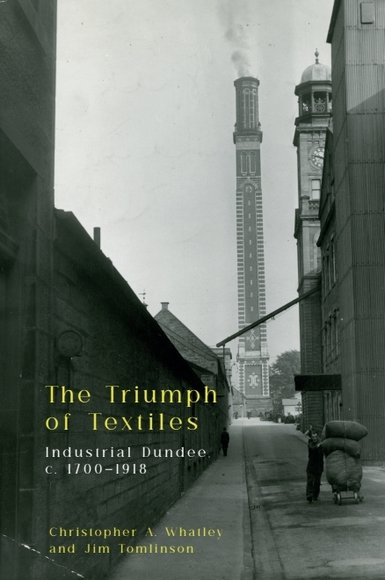The Triumph of Textiles
Industrial Dundee, c. 1700–1918

A fresh account of the remarkable rise of Dundee as a global industrial city – and the origins of its later demise. The background to jute, the product most closely associated with Dundee, is investigated in unprecedented depth. The role of flax and linen as foundations for the jute industry is emphasised.
The book challenges many perceptions of Dundee. Linen was as important to Dundee before c.1850 as jute was afterwards; the significance of jute pre-1850 has often been exaggerated by historians. Traditionally Dundee’s success was attributed to the production of cheap coarse cloth for sacks, bagging etc. Yet many firms manufactured high quality, admiralty grade canvas, and colourful rugs and carpets in imitation of Brussels and other woollen floor coverings.
Design was important. So too were enterprising merchants and manufacturers from the early eighteenth century onwards. Although squalor and industrial and social conflict became the norm after the 1870s, prior to that Dundee was relatively buoyant economically, and greatly admired by visitors including those from as far afield as the US. In short, Dundee was one of Scotland’s industrial powerhouses – a fact too often overlooked.




